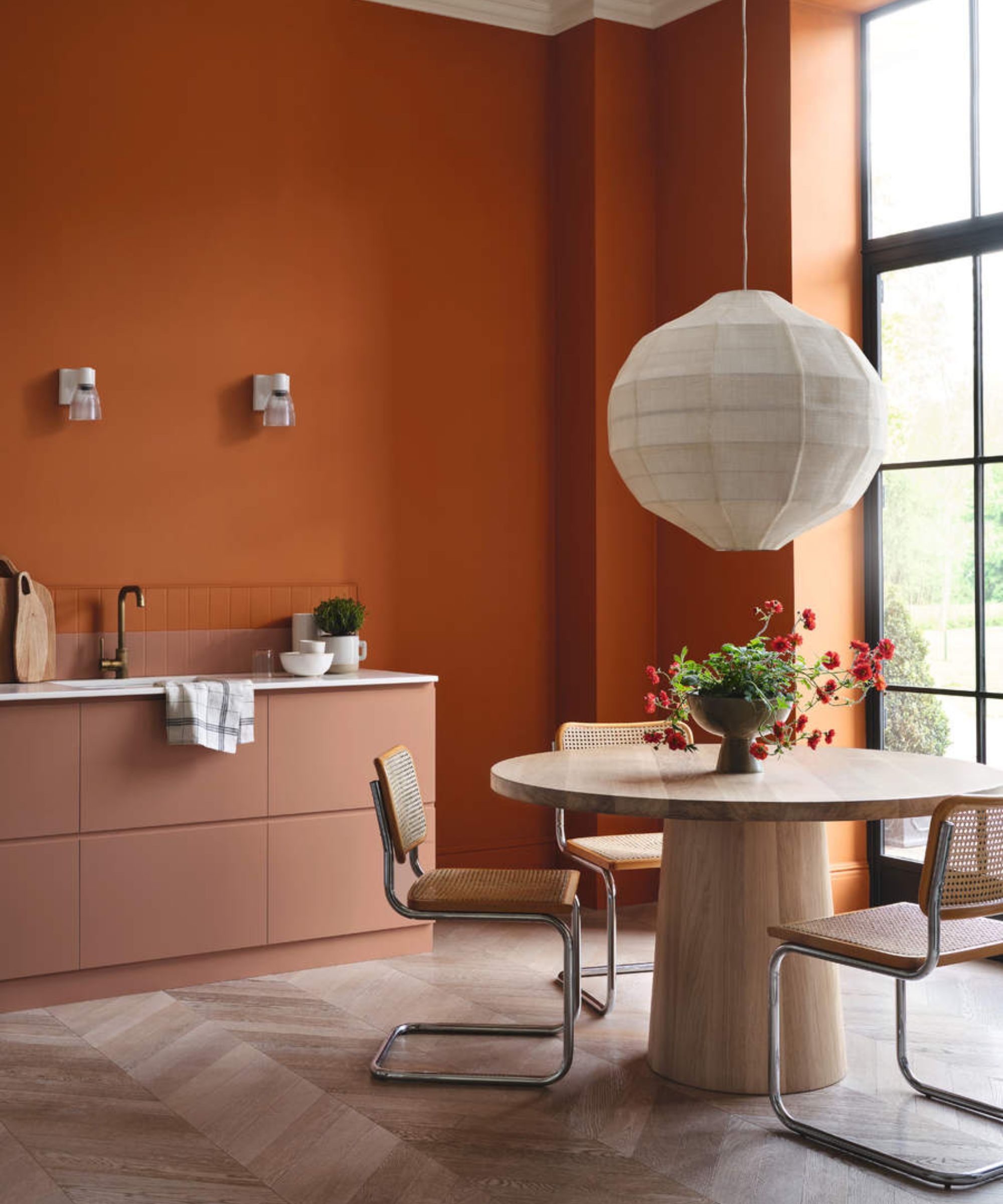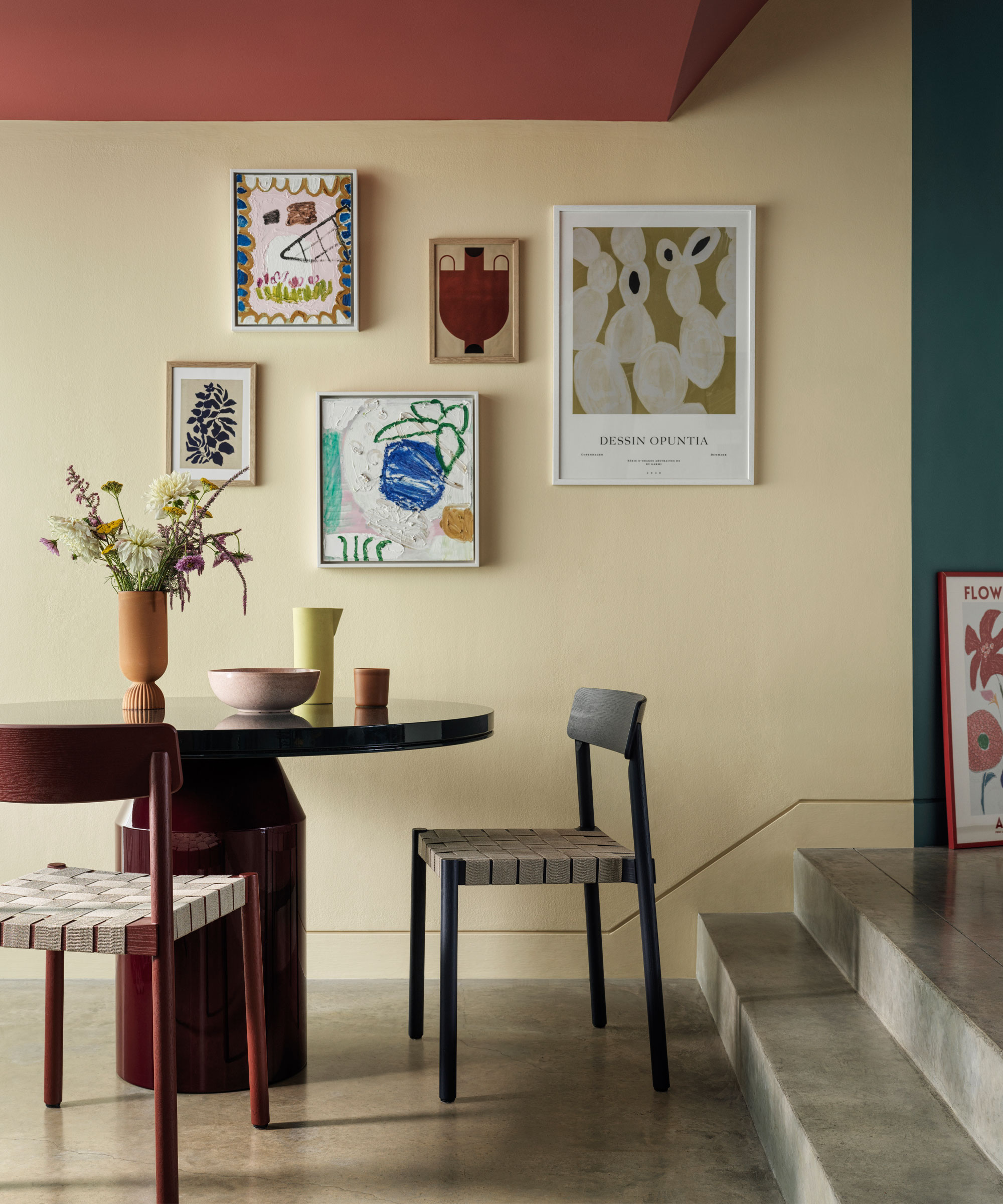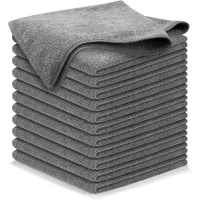How to clean and maintain every type of paint finish on your walls
Using the wrong techniques for your paint finish can impact its appeal and longevity – work out which finish you have and apply the right cleaning methods


Amid the hustle and bustle of everyday living, our walls inevitably bear the occasional scuff, stain, and discoloration. As such, understanding how to clean the paint finish on your walls is essential for keeping your living spaces looking spotless and sleek.
Before delving into how to clean walls, it is crucial to identify what type of paint you have on each wall you intend to clean. With various paint finishes requiring tailored cleaning techniques and specific materials, knowing the type of paint you're dealing with is key to preserving the integrity of your paint job.
By applying the specific cleaning tips suited to your paint's characteristics, you can ensure your walls and paint ideas remain clean, vibrant, and beautiful for years.
How to clean and maintain every type of paint finish
Regular maintenance of your walls, such as dusting and spot cleaning, is key to prolonging the lifespan of your paint – this way you can save time and money, as well as create a healthier indoor environment by preventing the buildup of dust and allergens.
Always test any cleaning solution on a small, inconspicuous area of a wall before applying it to the entire surface to ensure that it does not damage or discolor the paint. If you discover it does, this will allow you to recalibrate the cleaning solution's intensity before cleaning the entire wall.
Matte and flat paint

Wall in Nutkin Claypaint, £47 for 2.5ltr, Earthborn X Country Homes & Interior
Cleaning: Despite their ability to hide imperfections already present on walls, flat and matte paint finishes are not so durable themselves and require a more delicate approach to cleaning.
- To clean walls with flat paint and matte paint, start by dusting them with a soft brush or microfiber cloth to remove loose debris.
- Then, dampen a sponge or cloth with a mild detergent mixed with warm water and gently wipe the walls in circular motions, covering every inch. Do not use a scrubbing motion, as this can damage the paint.
- If you notice stains or marks, gently dab the solution on this area.
- 'I always default to cleaning and maintaining painted walls with a Mr Clean Magic Eraser, which you can buy on Amazon,' adds Homes & Gardens' Content Director Lucy Searle. 'You simply wet it and lightly rub over marks and scuffs to remove them effortlessly from everything from painted walls to floors.'
- Once cleaned, rinse the walls with clean water to remove any soap residue, and carefully wring out any excess liquid to avoid saturating the walls. Gently wipe away excess water and pat the walls dry with a soft cloth to prevent streaking.
Maintenance: Since flat and matte paint has porous textures that tend to trap dirt, you should dust the walls with a soft cloth or microfiber duster to remove any loose dirt or debris before it gets trapped and warrants deeper cleaning
Design expertise in your inbox – from inspiring decorating ideas and beautiful celebrity homes to practical gardening advice and shopping round-ups.
'Sometimes, painting a wall – or at least painting over a chip or knock – is the only way to maintain its flawless finish,' adds Lucy Searle. 'Matte walls, in my experience, are the easiest to maintain because, once cleaned, you can use leftover paint to lightly cover over patches where paint has been knocked off, feathering the brush outwards to blend the old finish with the new.'
Latex or water based paint

'Latex or water-based paint requires a gentle touch so you don’t take the paint off as you clean your walls,' explains Grazzie Wilson, Head of Creative at Ca’ Pietra.
Cleaning: While these types of paints are designed to be cleaned with soap and water since the main pigment is suspended in a water solution, it's essential to be cautious not to wash the wall with water alone, as this can potentially thin the paint:
- 'To strike the right balance, the best method is to add a few drops of dish detergent or a few tablespoons of vinegar to approximately half a bucket of water,' recommends Grazzie Wilson. 'This solution will provide a gentle cleansing power to lift dirt and grime from your walls without compromising the paint's integrity.
- 'Once these solutions have been mixed together, use a soft sponge to wipe dirt and grime from your walls gently.' Be sure to wring it out well before cleaning walls, and avoid applying too much pressure that could inadvertently strip away the paint.
- Then, rinse the wall with a damp, clean cloth. Then, ventilate the space and dry the wall with a soft towel to prevent water spots and streaking from undermining your cleaning efforts.
Maintenance: Whether it's a splash of coffee or a pen mark, address spills and stains on the walls immediately to prevent them from setting. Blot the walls with a soft cloth and a gentle cleaning solution.
Incorporate cleaning walls into your regular household maintenance routines. Dusting and vacuuming walls to remove debris and periodically wiping them is essential to prevent grime build-up and keep the paint looking fresh.
Periodically inspect the painted walls for signs of wear and damage, such as scratches, chips, and peeling or fading, and address these promptly with touch-ups to prevent further paint deterioration.
Oil based paint

Cleaning: 'While you can use similar methods when cleaning oil-based paints as with latex or water-based paints, they typically demand and can handle a bit more elbow grease and specialized cleaning products, especially in areas prone to grease build-up, such as in kitchens,' says Grazzie Wilson.
- Start by preparing a cleaning solution of warm water combined with a mild degreaser or mild detergent and vinegar. These will effectively break down grease and grime without damaging the paint. You can try this Stanley Home Products degreaser from Amazon.
- Use a soft sponge or cloth to apply small amounts of the solution to the wall. Again, you can use some elbow grease to remove any stubborn grime or stains, but be cautious not to scrub too vigorously to avoid damaging the paint.
- Rinse the wall with a clean cloth and water, working in sections to prevent streak marks. Blot the wall dry, then use dehumidifiers or open windows to speed up the rest of its drying.
Maintenance: As with latex-based paints, clean stains immediately by blotting them with cleaning solutions appropriate for oil-based paints, dust and wipe walls routinely, and inspect for signs of wear.
Pay close attention to moisture-prone areas since oil-based paint can be more susceptible to damage here. If you are doing touch-ups, ventilate the space to facilitate faster drying.
USANOOKS Microfiber Cleaning Cloth| Was $15.99, now $9.99 at Amazon
Add these soft cloths cleaning supply list to ensure when your walls need a quick touch-up or more thorough cleaning, you have a gentle way to remove dirt and debris and dry them.
Eggshell

Cleaning: Eggshell paint is delicate and requires only the lightest of touches when cleaning.
- 'Use a soft cloth to remove dust, and use a soft sponge with a mild soap and water solution to remove tough stains,' advises Jess Farinha, Founder of London House Cleaner. 'Remember not to scrub too hard for stain removal, as it can dull and damage the paint.'
- Rinse the wall by lightly wiping it with a damp cloth, then use a soft, dry cloth to gently pat the surface dry. Avoid leaving excess water to air dry because this can cause water spots or streaks on the paint.
Maintenance: 'If you opt to maintain your Eggshell, satin, and gloss finishes with a paint touch-up, they will all benefit from a light sanding before repainting so that the edges of the patch blend seamlessly with the new paint,' recommends Lucy Searle.
Satin paint

Cleaning: Satin paint is highly durable and is an easy paint finish to clean, although, without the proper method, cleaning can dull the satin sheen.
- Begin by gently wiping the walls with a microfiber cloth to eliminate any surface dust, dirt, or cobwebs.
- Mix a small amount of mild detergent or dish soap with warm water. Alternatively, you can use a gentle all-purpose cleaner diluted according to the manufacturer's instructions.
- Dip a soft cloth or sponge – such as this Carlisle sponge from Amazon – into the cleaning solution and wring out any excess liquid. Using circular motions, gently wipe the painted surface
- Once you've cleaned the surface, rinse it thoroughly with clean water to remove any soap residue or remaining debris, starting from the top and working your way down to catch any drips and prevent streaking. After rinsing, use a soft, dry cloth to pat the surface dry gently. Avoid rubbing vigorously, as this can cause streaking or watermarks on the paint.
Maintenance: Satin paint is also one of the easiest paints to maintain. It stands up well to regular cleaning, making it an ideal choice for high-traffic areas of your home.
Gloss paints

'Gloss, or variants of gloss paint, are more durable and easier to clean than other paint finishes, making it ideal for areas you know have more wear and tear, such as kitchens and hallways,' recommends Grazzie Wilson.
Cleaning: It requires a slightly different approach compared to other paint finishes due to its high sheen and smooth surface.
- Begin by dusting the walls with a microfiber cloth or soft brush to remove any surface dirt.
- You can use a specialized gloss paint cleaner, an all-purpose cleaner diluted according to the manufacturer's instructions, or a small amount of mild detergent or dish soap with warm water in a bucket. Dip a soft cloth or sponge into the cleaning solution and wring out any excess liquid. Gently wipe the painted surface in a circular motion, starting from the top and working your way down.
- Use a mixture of mild detergent and warm water for stains, applying it to the affected areas with a soft sponge. Gently scrub the stains in a circular motion, being careful not to damage the semi-gloss surface.
- Rinse the walls with clean water and dry them with a soft cloth to maintain their shine.
- For an extra glossy finish, you can buff the cleaned surface with a soft, dry cloth or microfiber towel to enhance the glossy finish's shine and luster. However, although these paints are more durable, avoid using too much pressure, as this can create an overly polished effort or cause fading due to UV exposure.
Maintenance: A regular cleaning with a soft sponge can go a long way to keep gloss paint looking its best. This will remove dust and surface grime that can dull the glossy finish over time.
With these simple tips, you can confidently clean your walls to preserve your paint's integrity and maintain a flawless space. Avoid using abrasive cleaners or scrubbing brushes on these paint finishes, as this can damage them. Likewise, using excessive moisture when cleaning walls can lead to the paint bubbling or peeling.
Next, learn why your wall paint is bubbling, and how to fix it.

Lola Houlton is a news writer for Homes & Gardens. She has been writing content for Future PLC for the past six years, in particular Homes & Gardens, Real Homes and GardeningEtc. She writes on a broad range of subjects, including practical household advice, recipe articles, and product reviews, working closely with experts in their fields to cover everything from heating to home organization through to house plants. Lola is a graduate, who completed her degree in Psychology at the University of Sussex. She has also spent some time working at the BBC.
